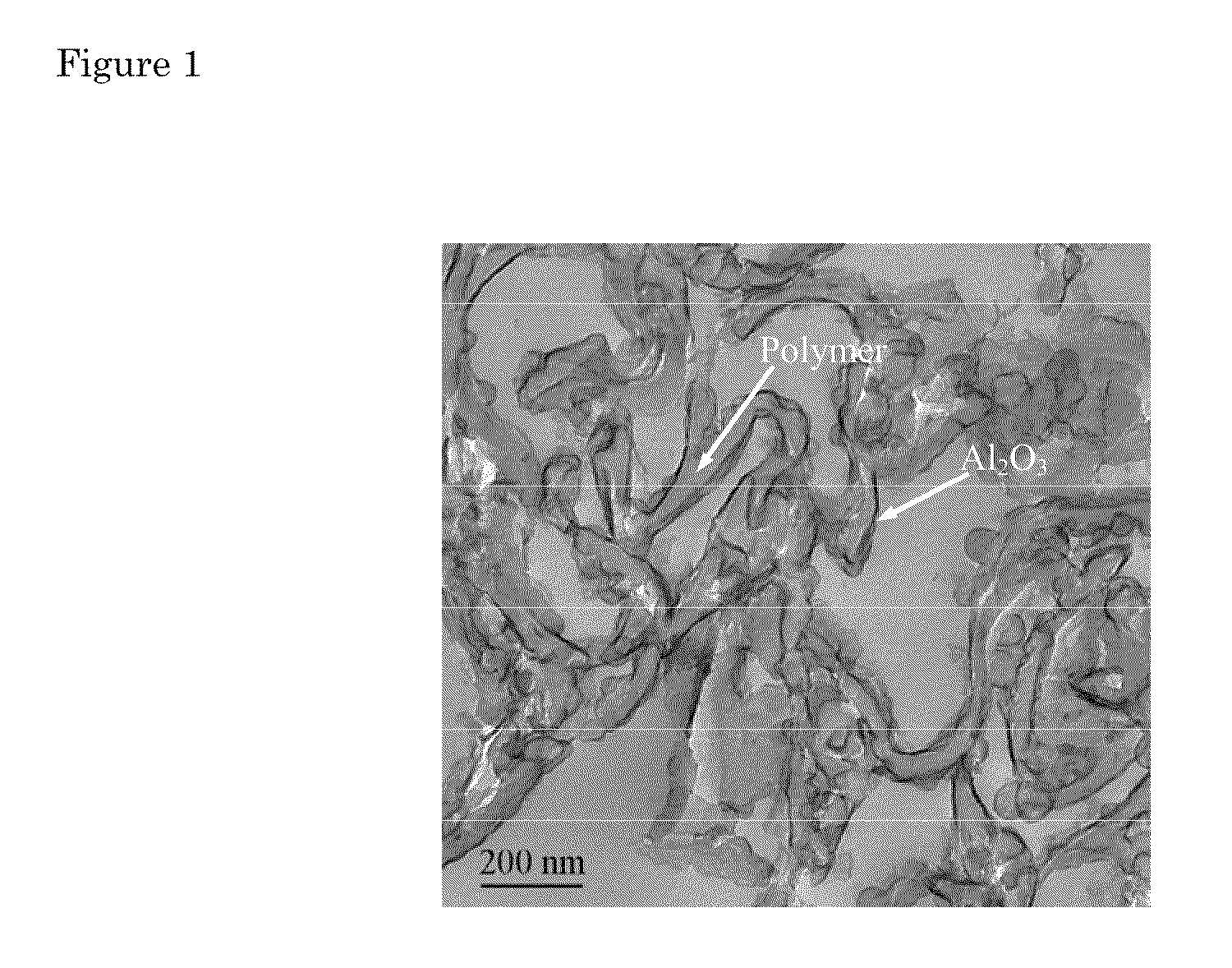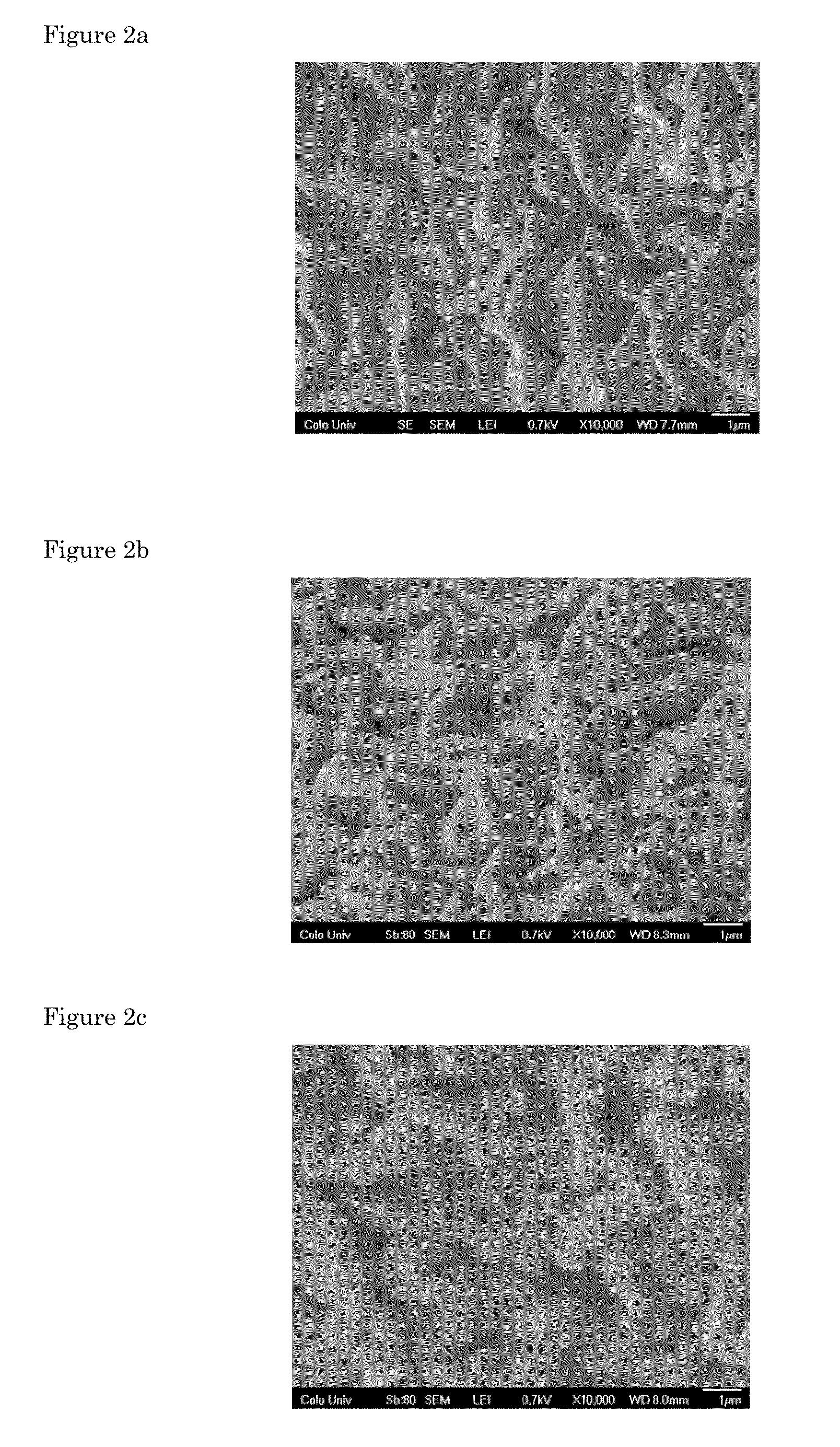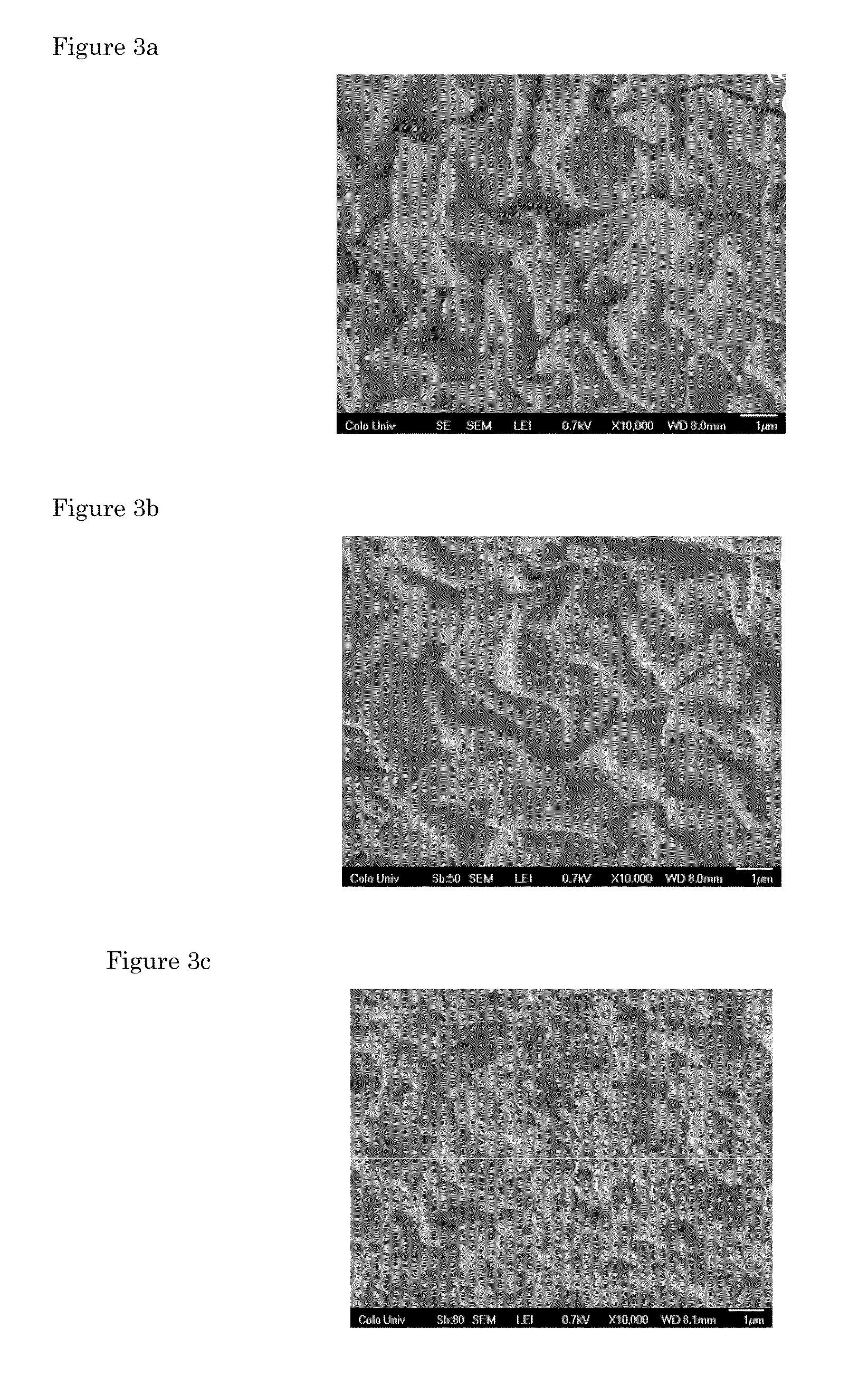Implantable devices having ceramic coating applied via an atomic layer deposition method
- Summary
- Abstract
- Description
- Claims
- Application Information
AI Technical Summary
Problems solved by technology
Method used
Image
Examples
example 1
[0054]Macroporous poly(styrene-divinylbenzene) (PS-DVB) particles (˜85% porosity, 8-10 cm3 / g pore volume, 43.5 m2 / g surface area, 70 kg / M3 particle density and ˜600 μm diameter) are coated with different thickness of aluminum oxide films by alternating exposure of deionized water and trimethylaluminum (TMA) in a vibrating fluidized bed reactor. The fluidized bed is 3.5 cm in diameter. There is a metal disc with 10 μm pores in the middle of the reactor which serves as the dosing header. The reactor is encased by a clamshell-type furnace and bolted to a platform that rests on four large springs. The reactor is maintained at low pressure using a vacuum pump, and the dosing header can also be pumped down directly using a smaller separate pump. A vibration system is used to overcome some of the interparticle attractive forces and improve the quality of fluidization. High purity nitrogen gas is used as the purge gas to remove unreacted precursor and any by-products formed during the react...
example 2
[0060]Titanium oxide films are deposited on macroporous polymer particles in the same general manner as described in Example 1. The ALD precursors in this case are TiCl4 and a 50% by weight solution of H2O2 in H2O. The reaction temperature is 100° C., which is still much lower than the softening / melting point of the porous polymer particles. Before the reaction, the particles are outgassed at 100° C. for 24 hours. 50 reaction cycles are performed. Z-contrast imaging of the titanium oxide coated polymer particles show that the titanium oxide films are very uniform and smooth, and have a thickness of 3 nm, which represents a growth rate of 0.06 nm per coating cycle at this experimental condition. Titanium oxide films are conformally grown on internal and external polymer particle surfaces.
Viability Testing of the Coated Porous Polymer Particles from Examples 1 and 2
[0061]Uncoated macroporous polymer particles and coated particles from Example 1 and 2 are separately extracted for one w...
PUM
 Login to View More
Login to View More Abstract
Description
Claims
Application Information
 Login to View More
Login to View More - R&D
- Intellectual Property
- Life Sciences
- Materials
- Tech Scout
- Unparalleled Data Quality
- Higher Quality Content
- 60% Fewer Hallucinations
Browse by: Latest US Patents, China's latest patents, Technical Efficacy Thesaurus, Application Domain, Technology Topic, Popular Technical Reports.
© 2025 PatSnap. All rights reserved.Legal|Privacy policy|Modern Slavery Act Transparency Statement|Sitemap|About US| Contact US: help@patsnap.com



